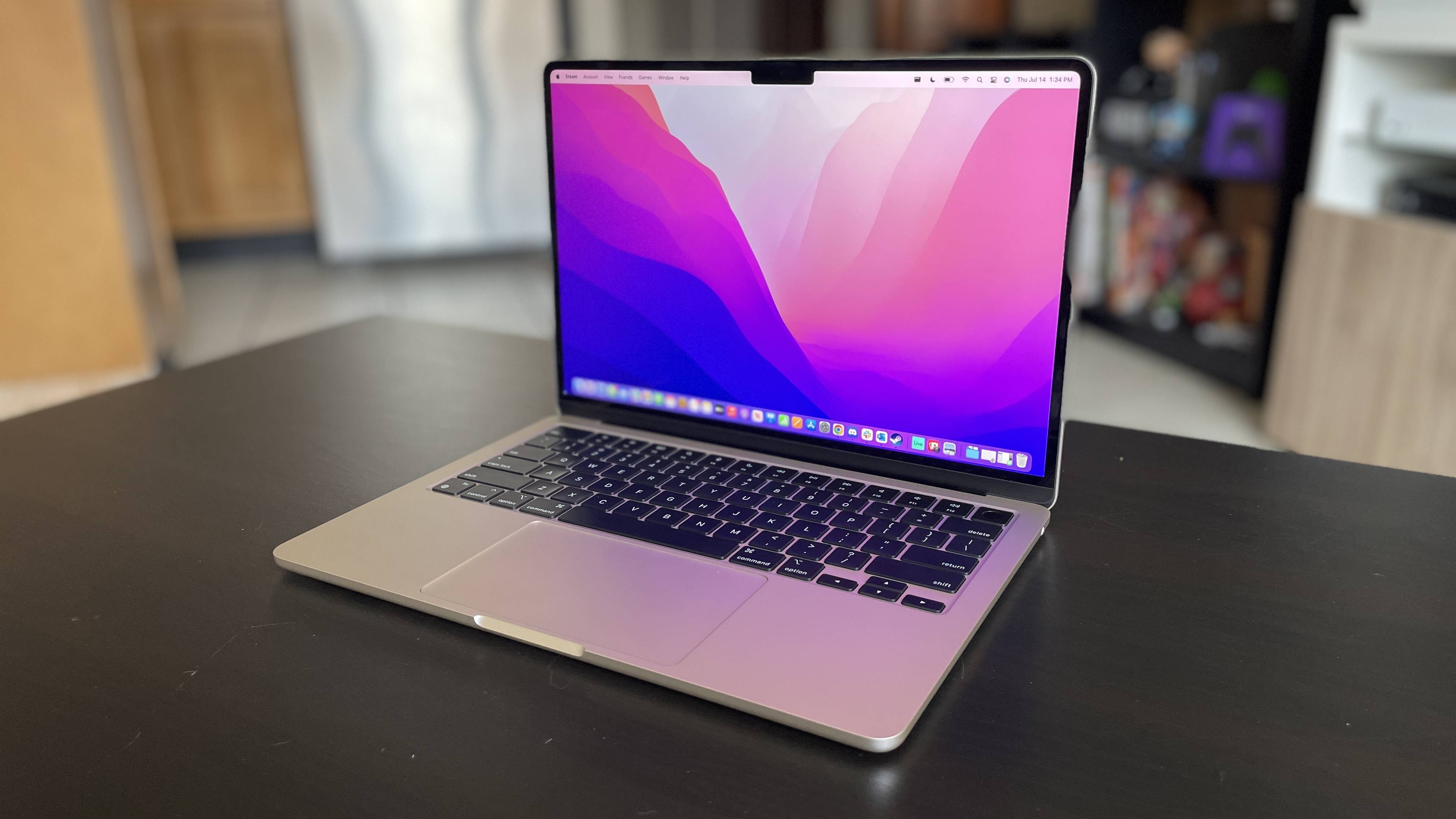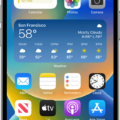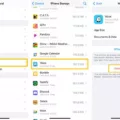Caching is an important part of browsing the web. It can help your device load webpages faster and reduce data usage. However, sometimes cached data can cause problems with websites not loading correctly, or you may want to clear it to protect your privacy. Clearing the cache in Chrome on an iPhone is easy and straightforward.
Before you begin, make sure you have the latest version of Chrome installed on your phone. Open Chrome, tap the three dots in the top right corner of your screen and select ‘Settings’ from the drop-down menu. Scroll down to ‘Privacy’ and tap on ‘Clear Browsing Data’. You will see a list of options; tick the box that says ‘Cached images and files’. You can also choose to clear other items such as cookies, browsing history and site data, but be aware that this will affect any website preferences or login details you have saved.
Once you have selected what you want to clear, press ‘Clear Data’ at the bottom of the page. A confirmation message will appear; press ‘OK’ to complete the process. The cache has now been cleared and any problems associated with it shold be resolved. If they persist, try restarting your device or switching off Wi-Fi before clearing your cache again.
With just a few simple steps, you can easily clear your Chrome cache on iPhone devices! This shoud help improve performance when browsing online and protect your privacy from being compromised by old cached information stored on your device.
Emptying the Cache on an iPhone
To empty the cache on your iPhone, open the Settings app and scroll down to Safari. In the Safari settings, scroll down and tap ‘Clear History and Website Data’. Tap ‘Clear History and Data’ to remove all cached data from your iPhone. This action will delete all browsing history, cookies, and other website data from your device. Please note that this will not erase any bookmarks or saved passwords.
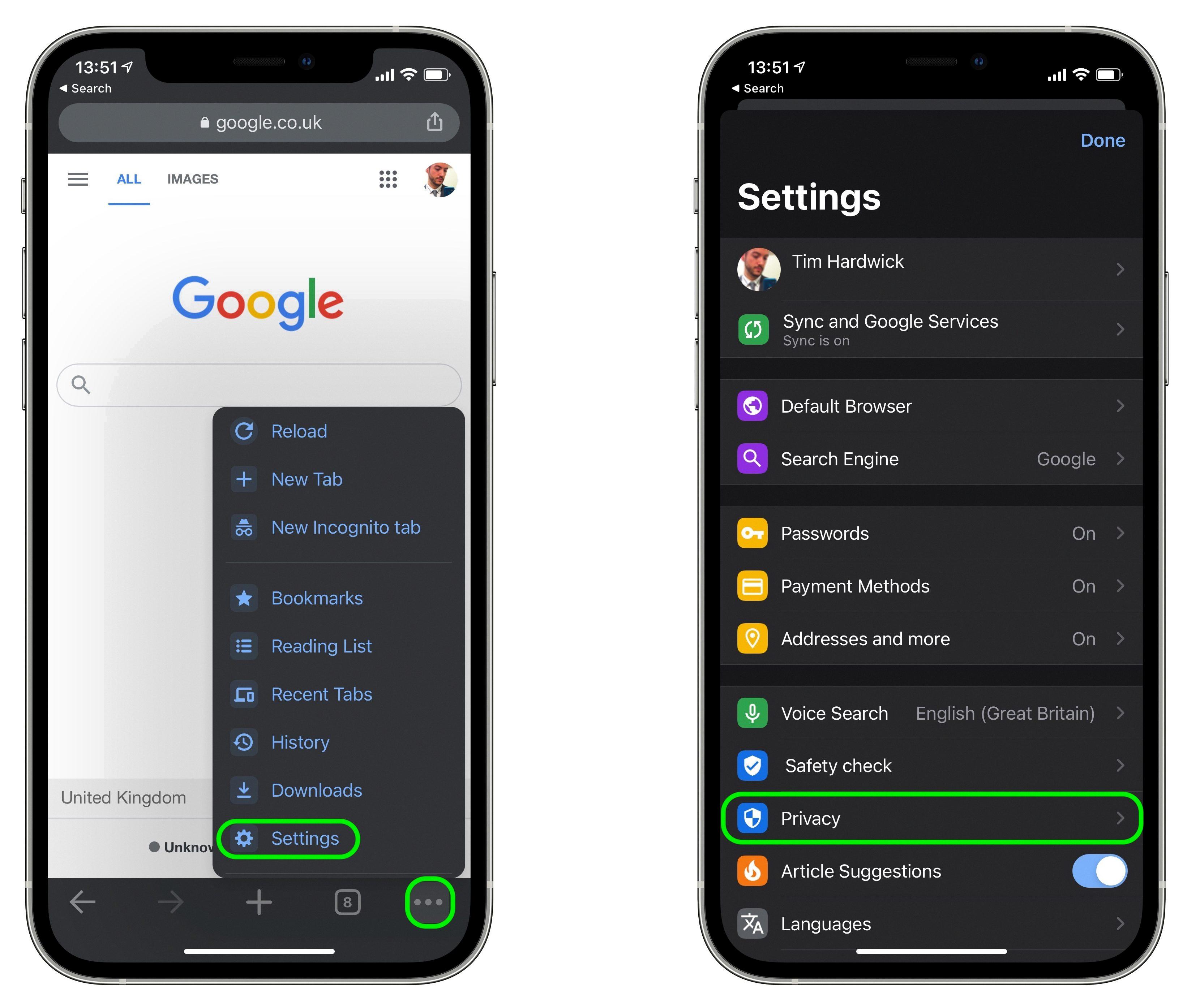
Source: macrumors.com
Clearing Google Chrome Cache
To clear your Google Chrome cache, open the Chrome browser on your computer and click the “More” button at the top right corner. From the drop-down menu, select “More tools” and then select “Clear browsing data”. A dialog box will appear, were you can select a time range to delete data from. To delete all of your data, select “All time”. Then, check the boxes next to “Cookies and other site data” and “Cached images and files”. Finally, click on “Clear data” to delete all of your cached data.
Clearing Cache for a Single Website on an iPhone
Yes, you can easily clear the cache for one website on your iPhone. To do so, open the Settings app and navigate to Safari > Advanced > Website Data. Here you will be able to see all the websites which have stored data on your device. Tap on ‘Edit’ and select the website whose cache you want to clear, then tap ‘Delete’. This will remove all the cached data associated with that website from your iPhone.
Does the iPhone Have Cache?
Yes, the iPhone does have a cache. The cache is an area of the iPhone’s memory whee temporary data from recently used apps and websites is stored. This stored data helps your device load content faster than it would otherwise, but over time it can take up valuable storage space or slow down your device. To help keep your device running smoothly, you can clear this data by going to Settings > Safari > Clear History and Website Data.
Clearing Cache on iOS 15
Clearing your cache on iOS 15 is a quick and easy process. First, open the Settings app on your iPhone. Next, navigate to Safari and select Advanced > Website Data. From here, scroll down and select Clear History and Website Data. Finally, tap the Remove Now button in the pop-up box to confirm the action. After this is done, your cache shoud be cleared from your device.
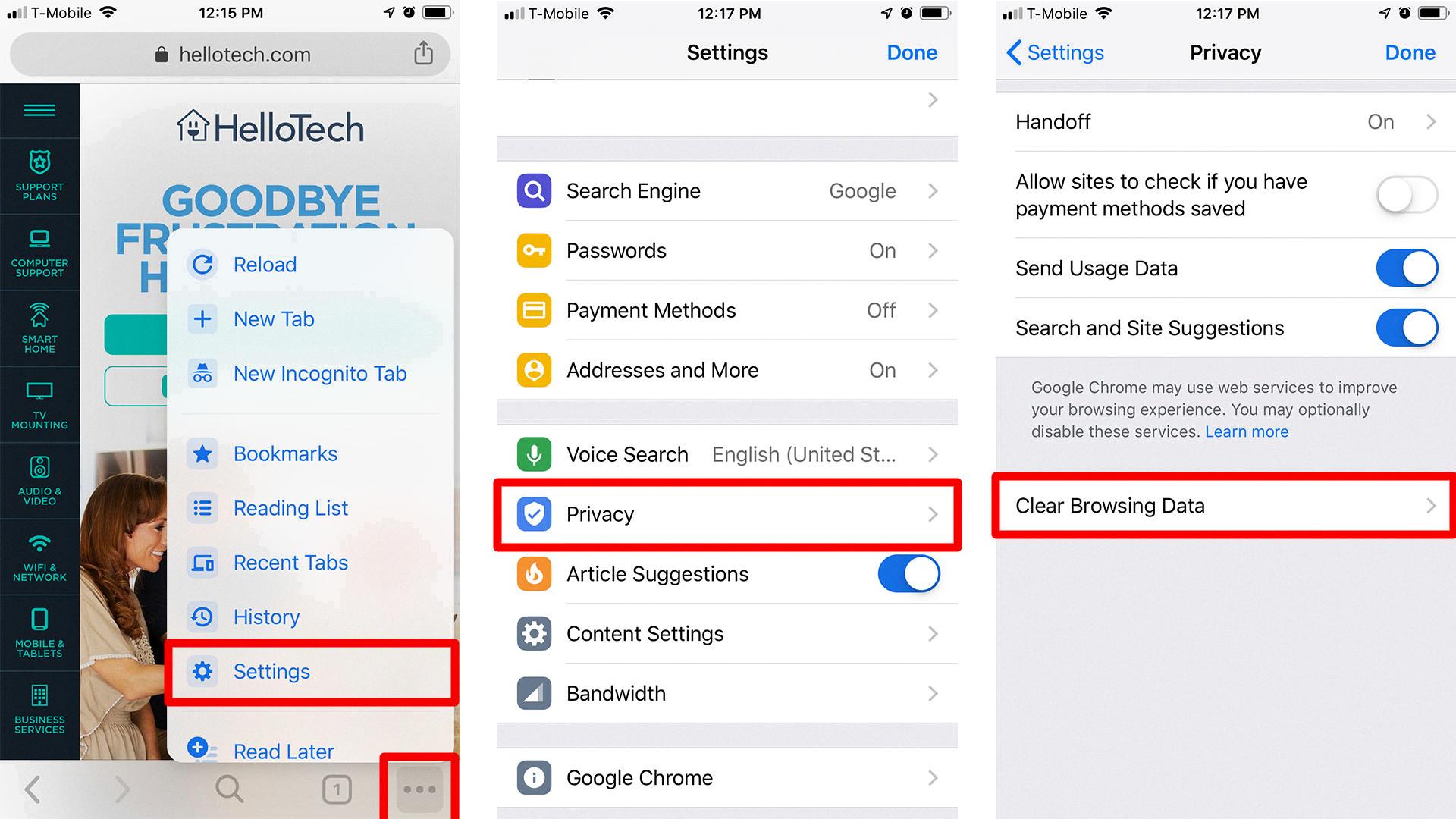
Source: hellotech.com
Locating the Cache in Google Chrome
On Google Chrome, the cache can be found in the ‘Default’ folder within the main Google Chrome application folder. This folder is typically located in the computer’s local storage, and its exact location will depend on the operating system being used. To access it, open your computer’s file manager and navigate to the Google Chrome application folder. Once inside, you should see a ‘Default’ folder – this is whee all of your cached files are stored.
Automatically Clearing Cache in Chrome
Yes, you can automatically clear your cache in Chrome. To do this, open the Settings page and click the “Show advanced settings” link at the bottom. Next, click on the “Content settings” button under the Privacy header. Under Cookies, select “Keep local data only unil I quit my browser” and click “OK”. Now, when you close Chrome, it will automatically clear your cache every time.
The Benefits of Clearing Cached Data
Yes, it is perfectly safe to clear cached data. Cached data are temporary files created by apps to help them remember certain information and improve thir performance. Over time, these caches of data can pile up and take up a lot of space on your device. Clearing the cache can help free up storage space and make your device run more smoothly. It is important to note that clearing the cache will not delete any of your personal information or settings.
Clearing Cache on iPhone 12
To clear the cache on your iPhone 12, you will need to go to the Settings app. Once you’re there, search for the Safari app and tap on it. This will direct you to a list of settings for Safari. Scroll down util you find the option labeled “Clear History and Website Data”. Tap on this option and it will clear your browser’s cache.
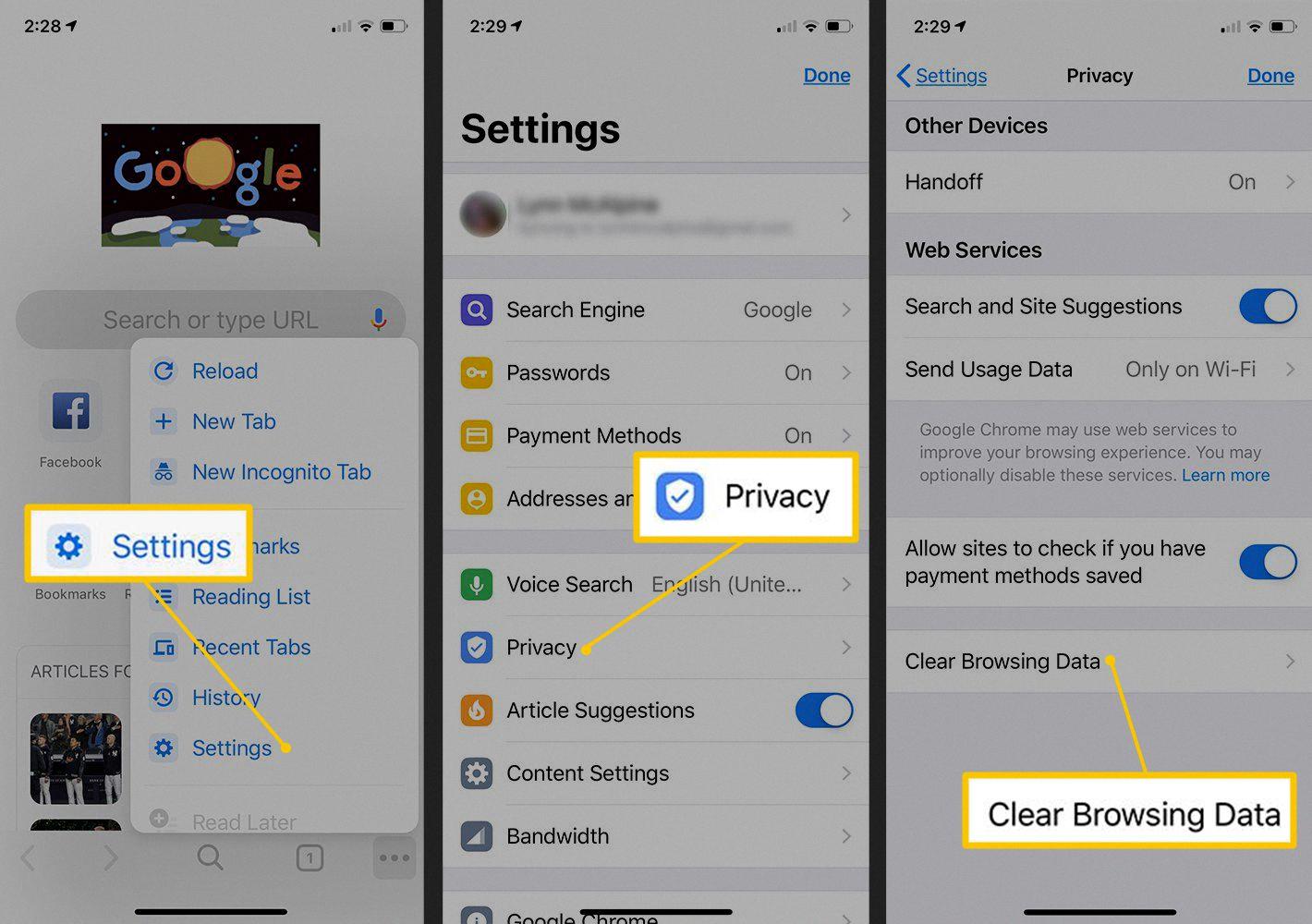
Source: lifewire.com
Clearing Cache on iPhone 13
Clearing your cache on an iPhone 13 is a quick and easy way to ensure that your device is running efficiently. To begin, open the Settings app on your iPhone 13. Then, scroll down and select Safari from the list of apps. Once in Safari, scroll down again util you see the option for Clear History and Website Data. Tap this option, then confirm on the pop-up window that appears. This will clear all cached data from your browser on your iPhone 13, allowing it to run more quickly and effectively.
Cleaning Up an iPhone
Cleaning up your iPhone is easy! First, open the Settings app, then go to General. Scroll down and select Reset. You’ll see an option called Erase All Content and Settings; tap this option and confirm when prompted. This will erase all data on your phone and reset it to its factory settings. Before you do this, make sure any important settings are backed up with iCloud, as the process can take a while. Once it’s finished, you’ll have a clean iPhone ready to use again!
The Benefits of Clearing Cookies on an iPhone
It is up to you to decide whethr or not to clear cookies on your iPhone. Clearing cookies can help resolve issues with the way your browser is behaving and can also help free up storage space. However, it may also mean that websites can’t glean personal information about you, which some privacy advocates recommend blocking anyway. Ultimately, it depends on how much control you want over your data and what level of privacy you are comfortable with.
Understanding the Role of Caching on an iPhone
A cache on an iPhone is a collection of data that is stored locally on the device when you visit certain websites. It helps the browser perform more quickly the next time you visit the page by allowing it to access certain parts of the page from your device instead of hving to download them from a server. Caches can be beneficial in terms of speed, but they can also take up a lot of space on your phone if they are not cleared out regularly. To clear out your cache, you can go to Settings > Safari > Clear History and Website Data. This will remove all web caches from your device, freeing up space and potentially speeding up browsing performance.
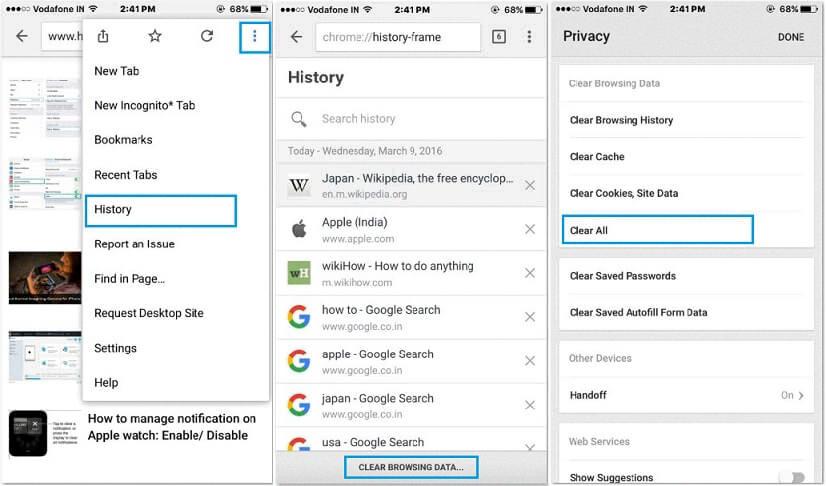
Source: imyfone.com
Does Deleting an App Delete the App’s Cache?
Yes, deleting an app will delete the cache. Cache is a collection of data that is stored in memory by an app to reduce the amount of time and resources needed for accessing information. When you delete an app, all associated files and data, including the cache, are permanently removed from your device. It’s important to note that the cache may be stored on your device even after you uninstall an app, so it’s best to clear it manually before deleting an app if you want to make sure all its associated data is removed.
Clearing the Cache on an iPhone 11 Pro Max
To clear the cache on your iPhone 11 Pro Max, open the Settings app and scroll down to Safari. Then, in the Privacy & Security section, tap the blue Clear History and Website Data option. This will open a popup pane where you can confirm the action by tapping Clear History and Data. This will clear your browser history as well as cached website data from your device, allowing your device to run more efficiently.
Clearing Chrome Cache Without Opening It
To clear the cache in Chrome without opening it, you can use the command line. Open Command Prompt (for Windows) or Terminal (for Mac). Then, type and run the following command:
“chrome://settings/clearBrowserData”. This will open a dialog box with options to select what data you want to delete. Select “Cached images and files” and click on “Clear Data”. This will delete all cached data from your browser without needing to open it.
Viewing Cached Pages in Chrome Mobile
Viewing cached pages in Chrome mobile is a simple process. First, open Chrome and enter the URL of the page you want to view in the address bar. Next, tap on the three-dot menu icon at the top rigt corner of your browser window and select “Find in page”. A search box will appear on the bottom of your screen. Enter “cache:” followed by the URL of the page you are looking for. Finally, tap on “Enter” and you will be taken to a cached version of that page. You can also access this cached version through Google search results by tapping on the down arrow beside the URL and selecting “Cached”.
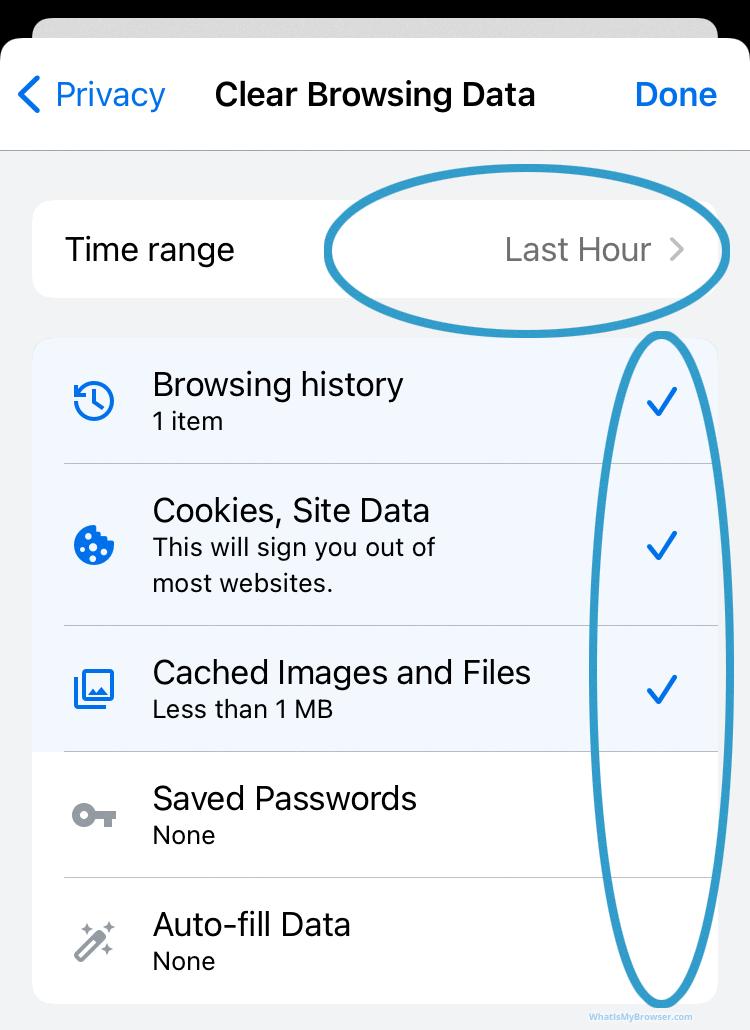
Source: whatismybrowser.com
The Benefits of Google Chrome Cache
Google Chrome cache is a feature that stores web page content, such as images, scripts and other files, on your hard drive. This helps to speed up the loading of web pages by providing a local copy of the content instead of having to download it from the internet each time you visit a page. The cache can also be beneficial if you revisit a page with similar content or if you revisit the same page multiple times.
However, having this data stored on your hard drive can potentially be a privacy concern for some people. It is possible for smeone to access your computer and view the cached information, which could reveal personal information such as websites visited or items purchased online. To help protect your privacy, it is possible to clear the Chrome cache from within the browser settings or by using certain plugins and extensions.
Automatic Clearing of Mobile Cache
You can easily set up your mobile device to automatically clear its cache on a regular basis. To do this, open the Settings app, select Storage, and then tap on Cached Data (or Temporary Data) to view the list of apps that are curently storing cached data. Select each app you want to clear the cache for and tap on Clear Cache. You can also tap on Clear All Cached Data at the top of the page to clear all cached data in one go.
Once you’ve cleared the cached data for all apps, you can enable auto-clearing by opening Storage again, tapping on Cached Data (or Temporary Data), and selecting Automatically Clear Cache from the menu at the top of the page. From here, you can select an interval for how often you want your device to automatically clear its cache.
Frequency of Browser Cache Clearing
The frequency at which a browser cache clears depends on the user’s usage. If the user rarely uses the browser, the cache may not expire until set by either an internal policy or by HTTP headers. However, if the user is using the browser heavily, it can clear as often as every 12 minutes or less.
Benefits of Clearing Cache When Browser is Closed
Clearing your browser cache when the browser is closed is important for a few reasons. First, it prevents old versions of webpages from being used instad of the latest version. This can be especially important when you’re dealing with sensitive data or banking information. Additionally, it can help your applications run better by freeing up memory and bandwidth that are being taken up by cached files. Finally, it can also protect your personal information by ensuring that any sensitive data stored in the cache is cleared out each time you close the browser. Clearing your browser cache regularly is an important part of maintaining a secure online experience.
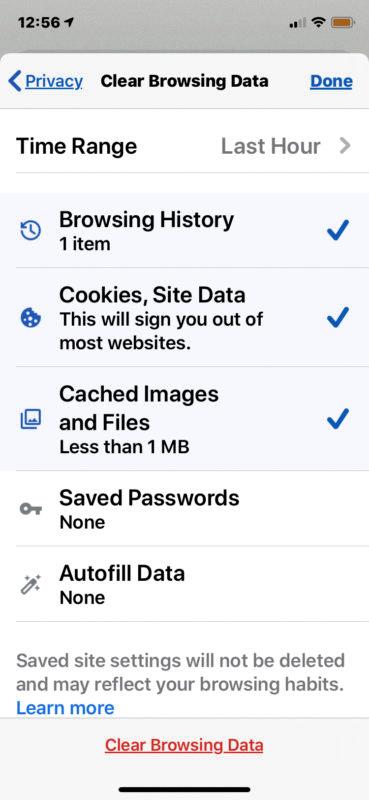
Source: osxdaily.com
Downsides of Clearing Cache
The primary downside to clearing your cache is that it can slow down page loading times when visiting websites. When a website is cached, its resources (images, scripts, etc.) are stored locally on your computer or device, making subsequent visits to the same website faster and more efficient. By clearing the cache, these resources will need to be downloaded agin each time you visit the website, resulting in slower loading times.
In addition to slower loading times when visiting websites, clearing your cache can also lead to longer download times for files you may download from the internet. This is because some web browsers use cached information when downloading files from websites, meaning that without a cache data will need to be downloaded again each time you attempt to download a file.
Finally, another downside of clearing your cache is that you may experience difficulty accessing certain websites or features of websites that require specific cookies or other stored data. Clearing your cache will delete all cookies and stored data associated with the website which means that features relying on this information may not function correctly unil new cookies and data are created and stored.
Frequency of Clearing Cache on Mobile Phones
It is generally recommended to clear your app cache every few months. Doing so will help keep your phone running optimally and free up storage space that can be used for other purposes. To maximize the effect, you should focus on clearing the cache of apps that take up the most space, such as large games or streaming services.
Does Clearing Cache Delete Photos?
No, deleting the cache on your Android phone will not delete any of your photos, videos, songs or other media. The cache is a temporary storage area that stores certain files and data to help apps run faster and more efficiently. Clearing the cache may help with certain performance issues, but it won’t remove any of your personal data.
Cleaning Apps on iPhone 12
To clean apps on an iPhone 12, open the App Library and locate the app you wish to clean. Then, press and hold on the app unil a pop-up menu appears. From here, select ‘Delete App’ and then tap ‘Delete’. This will remove the app from both your App Library and your Home Screen. To reinstall the app, search for it in the App Store or use your Apple ID to log in to iTunes and redownload it.
Clearing All App Data on an iPhone
Clearing all app data on your iPhone is a simple process. First, open the Settings app and tap your name at the top of the screen. Next, select iCloud and then Manage Storage. You will see a list of all apps that use iCloud storage. Tap on any app to view its data stored in iCloud. Finally, select Delete Data and confirm by tapping Delete to clear all app data associated with that particular app. Repeat this process for each app you wish to clear the data from.
Conclusion
Clearing the cache in Chrome on an iPhone is an important step to take when troubleshooting any issues you may be having with the app. It will clear out any stored data that could be causing problems and help the app run more efficiently. This is done by going into the settings for Chrome, then selecting Privacy, followed by Clear Browsing Data. Here you can choose what type of data you would like to clear, such as cookies, cached images and files, and browsing history. Taking this step can help improve performance and speed up your browsing experience wthin Chrome.




